Terrorism 12
Domestic terrorism in the terrorist state

Domestic terrorism in the terrorist state
The search for notoriety, the need to be heeded, social inequalities, anger, desperation, racial hatred, coexist in a country that dominates the world through the greatest expression of violence, war. All this and more underlies those who pull the trigger in the streets, schools and workplaces of the United States.
Published: Sunday 29 May 2022 | 12:05:15 am.
Author:

Juana Carrasco Martin | juana@juventudrebelde.cu
Translated and edited by Walter Lippmann for CubaNews.
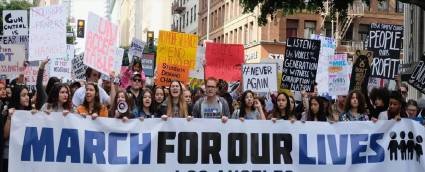 Tuesday’s devastating mass shooting in Uvalde – a small Texas town where the victims were 19 students between the ages of seven and 10 and two teachers at Robb Elementary School, where the majority of the student body is Latino and poor like the perpetrator himself – put the spotlight on this weekend’s National Rifle Association (NRA) annual meeting in Houston, Texas.
Tuesday’s devastating mass shooting in Uvalde – a small Texas town where the victims were 19 students between the ages of seven and 10 and two teachers at Robb Elementary School, where the majority of the student body is Latino and poor like the perpetrator himself – put the spotlight on this weekend’s National Rifle Association (NRA) annual meeting in Houston, Texas.
The pro-gun lobbying group’s convention was being held starting Friday some 300 miles from the scene of the tragedy, and that day would feature appearances by Texas Governor Greg Abbott, Texas Senator Ted Cruz and former President Donald Trump, all Republicans.
The NRA has successfully “lobbied” Republican members of Congress – to many of whom it contributes juicy donations during their election campaigns, as it does to more than a few Democrats – to reject any bill that would restrict access to guns, including a ban on assault weapons and high-capacity magazines, and also to reject a bill that would apply background checks to all gun sales.
Texas is an excellent supporter of the Second Amendment to the U.S. Constitution, and last year passed a law allowing people to carry handguns without a permit or training in their use.
On Thursday – as the family of Irma Garcia, one of the two teachers killed in Uvalde, announced that the teacher’s husband of 25 years and father of her four children, had died of a heart attack as a result of the tragedy – Senate Republicans blocked the Domestic Terrorism Prevention Act.
The legislation would have created an interagency task force within the Department of Justice, the Department of Homeland Security and the FBI to analyze and combat the infiltration of white supremacists into the military and federal law enforcement agencies.
It was an attempt to respond to an earlier shooting, just ten days before the one in Texas, at a supermarket in Buffalo, New York, that left ten people dead, most of them Black, and was perpetrated by a young white, racist, right-wing extremist, tragic event that was described by President Joe Biden as an act of terrorism that should no longer be allowed.
Senate Democratic Majority Leader, New York lawmaker Charles Schumer, said before the vote, “The bill is so important because the mass shooting in Buffalo was an act of domestic terrorism. We have to call it what it is, domestic terrorism. It was terrorism that fed on the poison of conspiracy theories like the white replacement theory,” and he saw it as an opportunity to curb gun violence, but his call for Republican support to begin debate failed.
A clear political dividing line put those of the political parties above the interest of safeguarding a society. Not a single Republican said yes to the measure, arguing that it would open a door to inappropriate oversight of political groups and create a double standard for groups on the extreme right and left of the political spectrum.
Some of those men, supposedly public servants, called it an “insult” to police officers, and labeled it a plan by Democrats to “name our police as white supremacists and neo-Nazis.”
It is obvious to recall the degree of impunity that police brutality has generally enjoyed, one of the most serious, enduring and controversial human rights violations in the United States as confirmed by human rights organizations, a national and institutionalized problem, expressed in unjustified shootings, severe beatings, lethal chokeholds during arrests, and other unnecessarily harsh physical treatment, where the victims are generally Blacks and Latinos.
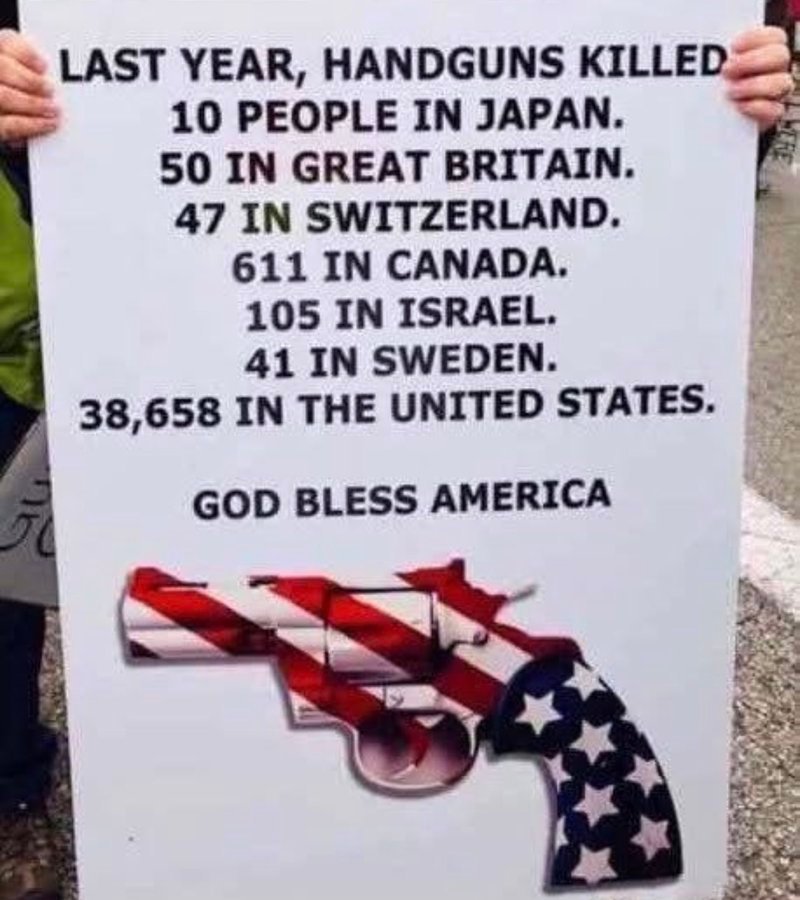
Polarization and a repressive environment

United States:
Polarization and a repressive environment
By Fernando M. García Bielsa
December 23rd, 2020
Translated and edited by Walter Lippmann for CubaNews.
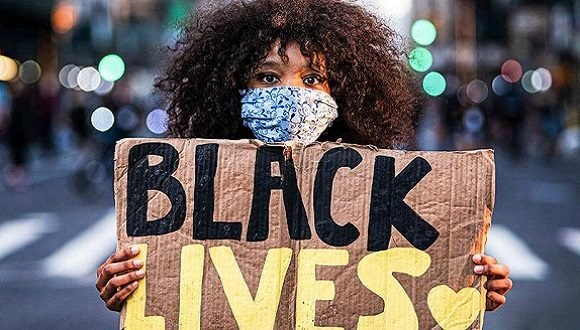
The latest incidents of police brutality and racist killings in many U.S. cities are not a recent phenomenon. They are long-standing events, stemming from the days of slavery and, as now, developing alongside the violence of paramilitary and white supremacist groups.
The warlike projection of the country and its having reached the point of being permanently involved in a series of wars in various confines, has permeated the psyche of thousands of people and is reflected in a growing militarization at the domestic level. In addition to police brutality, it is clearly expressed in the proliferation of violent groups, as well as in government agencies such as the prison system, the militarization of the border with Mexico, and violence against immigrants.
In addition to the violent and racist tradition with which the U.S. nation was formed and the impact of imperial militarism, there are also the social fractures, polarization, and growing inequalities that this society has shown in recent decades. There are tens and tens of millions of people inserted in a vicious circle of residential segregation in unsafe neighborhoods lacking basic services.
Let’s look at some background
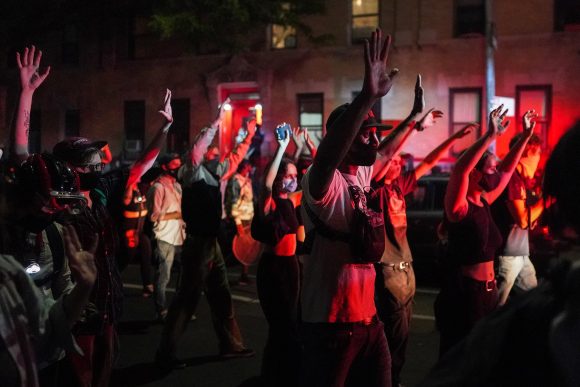
Protests in New York against racism. Photo: The New York Times/Archive
The question of race and racism against Blacks has been a major factor in shaping American culture and policy from colonial times and the formation of the republic to the present. Much of national politics revolves around them. The historical and current location of African Americans is – in many ways – central to the country’s problems.
In turn, Black political movements and activism have historically been at the forefront of struggles for progressive change in the United States, a vast and diverse country where class and other movements have been co-opted or fragmented. This is influenced by historical reasons, immense institutional obstacles, as well as the dimensions of the country, the tensions arising from the multi-ethnic character of its population, and the growing weakness of the labor movement.
In the late 1960s and 1970s, so-called “communities of color” began to understand that society, as it existed, would never address their needs as they were perceived and felt. It was in this period that exploring their cultural heritage and building their own institutions became their greatest strength. The Black Power slogan had electrified Black communities across the country.
A dramatic transformation in the self-image of Black people began, in the context of one of the most effective social movements to date in the country, of racial pride, collective consciousness and community solidarity, with enormous repercussions in society as a whole.
After the impact of the great struggles and mobilizations of the Black civil rights movement, it became evident to sectors of power that the strength of such movements was being enhanced given the serious social problems in those communities. For this reason, since the 1960s, a whole series of government programs and assistance projects for the “development” of marginal areas and Black communities had been spreading.
Among the results of these programs was the strengthening of reformist groups and economic interests, as well as contributing in the long term to the formation of a whole layer of African American and Latino professionals and politicians with possibilities of access, public presence, and supposed representation of the interests of so-called ethnic minorities.
The Black bourgeoisie, including that which developed during the Obama administration, has continued to make false promises of inclusion. Except in the recent context in reaction to the wave of killings and police violence, organized political activism by African Americans has reached this stage after a long period of ebb.
Black groups have remained atomized, uncoordinated, focused on immediate economic and social concerns, and their energies have become diffuse, marked by the needs and life emergencies of their social bases, internal divisions, and the social polarization in their communities. External manipulations of all kinds do the rest.
The appearance of greater political influence by the Black population given the access of a few of their own to positions of some visibility has been misleading. Despite some advances in participation and representation, Blacks continue to fare worse than whites in having their political preferences and interests legislated.
The increase in class diversity that has taken place within these ‘communities’ and the nefarious role played by the Democratic Party in presenting itself as a champion of the underprivileged when in fact it is subject to the interests of the country’s financial elite, were felt.
A polarized and contentious society
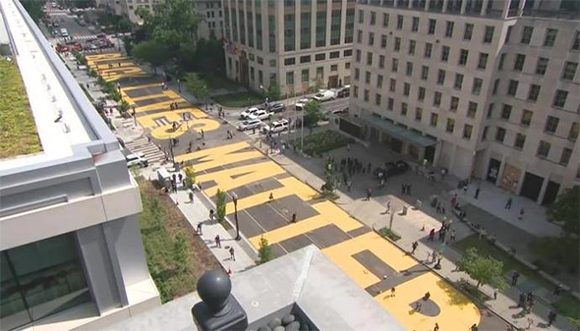
Black Lives Matter mural on a street in Washington Photo: CNN.
The United States shows a growing number of very deep social divisions. Racism and the dangerous ideology of white supremacy is a serious obstacle to social cohesion, and is sometimes conducive to and at the root of serious outbreaks of violence. Demographic trends, some warn, suggest that the nation will not be sustainable in the long term unless marked inequalities between populations of diverse ethnic backgrounds are corrected.
Analyst Tim Wise said (on the Truthout website, March 2, 2012) that, in 25 or 30 years when non-whites will be half the population and the majority in several states, it will not be sustainable for the country to maintain that population as it is now. Blacks today are three times more likely to be in poverty than whites, twice as likely to be unemployed, with several times less assets and with an income less than the other half of the citizenry, and with nine years less life expectancy.
Behind that reality, repressive conceptions prevail. These are not only fed by overflowing militaristic mentalities or fears of ungovernability, but they are backed up by calculations of profit generation. These are derived from the so-called wars on drugs, mass incarceration in private prisons, outsourcing to private “security” agencies, and institutionalized repression against immigrants and marginalized populations.
The focus of repressive state activity is directed against Black groups and progressive organizations, which has led to the violation of civil liberties, the criminalization of social movements, increased surveillance and infiltration of Black, Latino and poor Muslim institutions and communities, including the deployment of undercover police, informants and intimidation in homes and public spaces.
–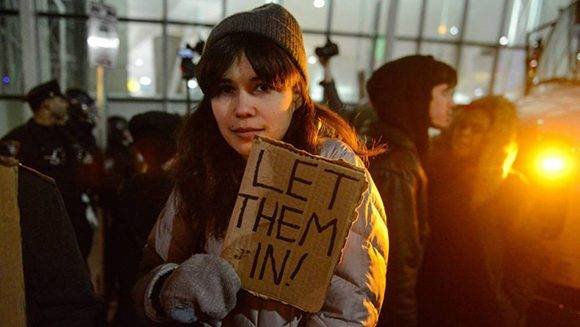
A woman protests in New York against the ban on Muslims in Trump. Photo: Stephanie Keith/ AFP.
Muslim communities in the country face an environment of growing intolerance and hostility since the September 11, 2001 attacks. State and local police forces gather information and spy on law-abiding Muslim citizens. They become targets of violence as an extension of racism and xenophobia to our day, virtually demanding submission and near abandonment of their cultural and identity expressions.
So far, anger and despair have replaced the organizational strength and momentum of the civil rights era.
Trapped in almost immovable racist structures
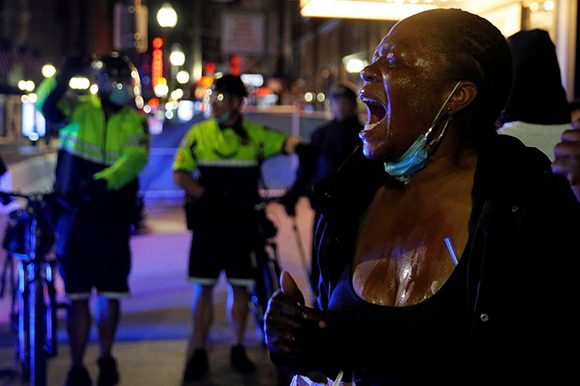
A woman affected by the tear gas launch during a protest in Boston in June. Within six nights, the agitation spread to every major city in the country and became a general protest against systemic racism in the United States. Photo: Brian Snyder/Reuters.
U.S. society is deeply fractured politically and across class, regional, economic, ethnic, religious, and cultural interests. Racial issues intersect with class differences and class oppression, and are often instrumentalized for political purposes. Levels of violence resurface; disparities are enormous. There are pockets of the population where people live in constant paranoia.
Even after the great rebellions against racism and the successes of the civil rights movement in the middle of the last century, including the partial dismantling of many of the legal structures that supported segregation, racial inequality remains a palpable fact. The racial chasm is widening and has not been altered by changes in government.
Racial prejudice in the United States has a strong negative impact on the lives of African Americans. It expresses itself in forms of discrimination in all areas and conditions of existence: segments of the population caught in a vicious circle of residential segregation, inferior opportunities for education or health services, marginality, increasing rates of incarceration, and discrimination in employment. Black workers receive 22% less than white workers in their wages, with the same levels of education and experience. The average income of African American households is just over half that of white households.
In most cities and urban areas of the country there are separate areas where the Black population resides,. This reflect the historical racial segregation that shaped the country and the policies created in the past to keep Black people out of certain neighborhoods. Many of these slums have high levels of poverty and face an intense and unwanted police presence.
In such an atmosphere and because of such deep-rooted prejudices, any activity, no matter how innocent, in which a Black man is involved generates suspicion, alarm and often danger to his life. Consider also that the rate of Black citizens in prison is five times that of white citizens. Despite being only 13% of the population they constitute 40% of all incarcerated men.
Highly peaceful neighborhoods coexist with others where violent death ravages the usually poor. Entire communities of Black, Latino, Muslim or Asian populations feel their communities are under increasing police occupation.
U.S. society has not been able to address the root causes of the outrage and anger that consume millions and are behind the recent powerful demonstrations against repression and racism. Neither politicians nor public institutions have established effective government programs to mitigate at least these gross inequalities, ultimately produced by the prevailing capitalist system.
On the other hand, what that society has done quite effectively is to divide and co-opt many of the struggles and organizing efforts that were going on in those communities.
The re-emergence of a “new Jim Crow,” that is, of a climate of brutal segregation, based on the mass imprisonment and repeated police killings of unarmed Black men, shows that the old systems of repressive control have increased in the present, always maintaining the dividing line of skin color.
In contrast, white hate groups, nationalists and racists, as well as their armed paramilitary branches, proliferate and carry out violent actions, often being overlooked or even in collusion with authorities in certain regions. Many of President Trump’s words and actions have seemed to encourage such groups.
All of this demagogic rhetoric, which has a fascist slant and is a mirror of the country’s war policies, encourages desperate sectors to organize themselves into militias to wage crusades of various kinds. It is a propitious environment when more than 300 million firearms, many of them of high caliber, are in the hands of the population, when a part of the hundreds of thousands of war veterans live with their frustrations, resentments and traumas of their war experiences.
In this context, hundreds and hundreds of right-wing armed militias throughout the country are operating, whose ideology and motivations are a combination of paranoia, fear and aggressive claims of their rights to carry firearms, receptiveness to elaborate conspiracy theories and extreme anti-government anger. Many claim that the country’s government has been subverted by conspirators and has become illegitimate, and therefore see themselves as patriotic by organizing themselves paramilitarily, confronting the authorities, and fomenting racial warfare.
An increasingly complex urban [and national] future
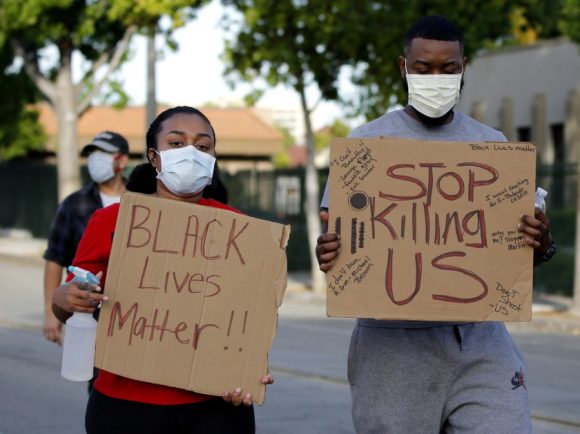
Stop killing us. Photo: Raul Roa/Daily Pilot
Many authorities, in conjunction with the media, continued to criminalize protests and progressive groups, going so far as to characterize minor actions as violent crimes and even “terrorism.
Raising alleged “security” interests, the so-called program to Counteract Violent Extremism (CVE) was begun under the Obama administration (2009-2017), that openly resembles the repression against radical groups and the COINTELPRO program of the 1960s and 1970s, and that was added to the actions deployed after the passage of the Patriot Act in October 2001 and other actions.
On the basis of sections of that law, federal agencies are able to make more and more inroads into areas of civil and personal life. The FBI, for example, can demand information such as telephone and computer records, credit and banking history, etc., without requiring court approval and without being subject to controls on the use that the feds make of such personal information.
Abuses and violations of the law often occur. Such is the case when attention is drawn to controversial sections of the Foreign Intelligence Surveillance Act of 1978, which allow for the conduct of mass spying on Americans communicating abroad. Recently the National Security Agency (NSA) has admitted to improperly collecting several hundred million phone calls from U.S. citizens.
According to William I. Robinson, a specialist on these issues, in his January 2018 article Global Police State, as war and state repression are privatized, the interests of a wide range of capitalist groups converge around a political, social, and ideological climate conducive to the generation and maintenance of social conflict.
For some time there have been signs that the government was anticipating the possible occurrence of serious civil problems and disturbances.
A video entitled “The Urban Future and its Emerging Complexity,” created by the U.S. Army to be used in the training of special forces, is revealing of the mentality and attitude in state entities regarding citizenship and the so-called “problems” that the government must be prepared to face through the use of martial law.
Already in 2008, a report from the Army Defense College stated that in the face of the possibility of a wave of widespread civilian violence within the country, the military establishment planned to “redirect its priorities under conditions of exemption to defend domestic order and the security of the people.
In its 44 pages, the report warned of the potential causes of such problems, which could include terrorist attacks, unanticipated economic collapse, loss of legal and political order, intentional domestic insurgency, health emergencies, and others. It also mentioned the possibility of a situation of widespread public outcry that would trigger dangerous situations and that would require additional powers to restore order.
In recent years, the U.S. state has radically expanded its punitive and surveillance capabilities. To limit protests, control dissent and popular opposition, as part of the well-known actions of the FBI and local police forces in previous decades, the system used administrative and legislative methods, espionage and covert infiltration, discrediting actions, massive “preventive” arrests, police attacks even against authorized peaceful protests, and so on.
The FBI’s budget for funding undercover agents, much of it within progressive organizations, rose from $1 million in 1977 to several tens of millions today.
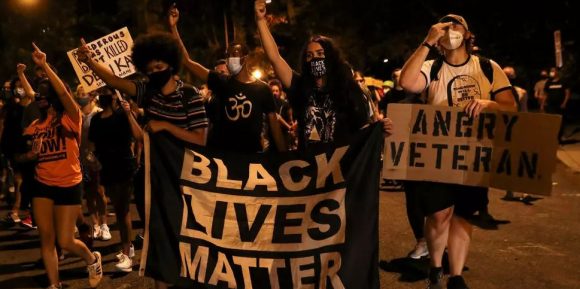
People march with signs, protesting police violence and racial equality in Washington, USA, on September 5, 2020. Photo: Leah Millis / Reuters
See also:
In the United States, Black deaths are not a flaw in the system. They are the system.
Domestic Terrorism?

Domestic Terrorism?
This is like saying “homemade terrorism,” almost always made for export, only this time the three cups of broth were in the halls of the U.S. Congress
January 18, 2021 00:01:54
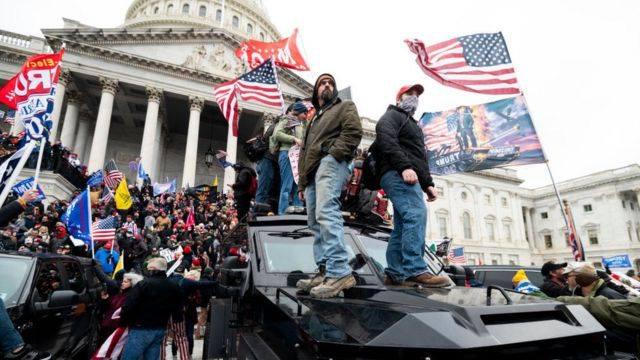
Photo: Taken from the Internet
This is what Joe Biden called the occupation, by force, of the Capitol in the United States. This is like saying “homemade terrorism,” almost always made for export, only this time the three cups of broth were in the halls of the U.S. Congress.
But this act of “domestic terrorism” had an agitator: Donald Trump, the president who reluctantly leaves the White House chair.
After that disaster, he called them intruders. The fact is that they played their part, or left the script; they no longer serve the game of lies; the change in attitude reminds us of the scene of the president throwing rolls of toilet paper at a Puerto Rican crowd after a hurricane on that neighboring island.
And it all happens in a country that extends the Cesarean finger to give or take life, issue certificates of democracy, or make spurious lists of countries that sponsor terrorism. Now they have no other honorable way out than to tear up the nomination sheet and sign up first.
However, President Trump only uncorked the bottle full of old demons: one of the flags that was carried by the “domestic terrorists” carried the symbols of 19th century slavery and racism.
José Martí, who lived in that country for 15 years, observed with concern the division and hatred. He learned of a marriage that was stoned to death because it was a white woman married to a black man. He saw children selling newspapers in the cold of New York. He saw the struggles between Democrats and Republicans and the role of money in the elections. He felt with pain the separation between rich and poor, and the imperial appetites for devouring other peoples. He did not hesitate to affirm that the United States of America was not the model to follow for the emerging Republics of Our America, since that giant already had feet of clay.
When he prepared for the Necessary War, he knew that this one is not only for Cuba and Puerto Rico, but “to save the already doubtful honor of English America”. Martí was not only a revolutionary for Cubans, he is also a revolutionary for the American people.
The images of the assault on the seat of American democracy confirm the future of José Martí’s thinking, that which opens the door to the spirit of Lincoln and closes the way to the dangers of the adventurer Cutting, the ancient face of those who now feed the supremacy of some men over others.
Many of those who attack Cuba, and tear their clothes in the name of freedom, now keep a strange silence. They turn their faces away, as if this matter were of minor importance, something very domestic that does not deserve to raise its voice, much less to fill its head with ashes.
Only this time, from the pages of Don Quixote, an old certainty jumps out: “The truth thins, but does not break, and always walks on the lie like oil on water”. This is one of the realities that floats: the shamelessness of “domestic terrorism”, made in the very house of the empire.
Related information
Assault on the Capitol: “democracy” in the U.S. again in question
A truck full of explosives in Washington, D.C.

Police found a van full of explosives and weapons near the Capitol on the day of the riots
A 70-year-old man is charged with possession of eleven Molotov cocktails, as well as an assault rifle and three handguns
By Russia Today
digital@juventudrebelde.cu
Translated and edited by Walter Lippmann for CubaNews.
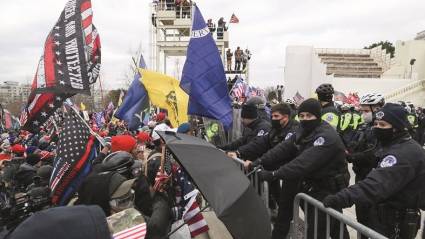
Led by Trump, his followers forced their way into the Capitol in Washington. Photo: Reuters Published: 01/06/2021 | 11:02 pm
The District of Columbia Attorney’s Office has filed charges Friday against an Alabama man who allegedly parked a van with 11 Molotov cocktails and other weapons near the Capitol on Wednesday, the same day of the congressional riots.
According to the statement from the Attorney General’s Office, on January 6, Capitol Police officers were warned of the possible presence of explosive devices in the area surrounding the legislative seat. During a protective sweep of the area, agents observed the handle of what appeared to be a firearm in the passenger seat of a pickup truck, which, according to their database, belonged to Lonnie Leroy Coffman, a 70-year-old man from Falkville, Alabama.
When they proceeded to search the vehicle, the police found a pistol, an assault rifle, as well as rifle clips loaded with ammunition and components for the manufacture of eleven Molotov cocktails (glass jars filled with flammable substances, rags and lighters).
Later, Coffman was stopped near his truck when he tried to return to his vehicle. When he was searched, he was found to be carrying two other guns.
The man has been charged with illegal possession of a destructive device, which carries a maximum prison sentence of up to 10 years, as well as carrying an unlicensed gun, which carries a maximum prison sentence of up to 5 years. Coffman remains in custody pending a hearing scheduled for Tuesday, January 12.
Against Restoring Cuba to “Terrorist List”

ATTEMPT to Put Cuba Back on U.S. Terrorist List Condemned
 By Carlos Rafael Dieguez
By Carlos Rafael Dieguez
January 07, 2021
Translated and edited by Walter Lippmann for CubaNews.
Letter from US religious organizations and institutions to the Secretary of State opposing the inclusion of Cuba on the List of State Sponsors of Terrorism.
The Honorable Mike Pompeo
Secretary of State
Washington DC.
Dear Secretary Pompeo,
Press reports suggest that he is considering adding Cuba once again to the list of “state sponsors of terrorism,” and we write to express our strong opposition.
There is no justification for adding Cuba to this list. While the United States has political disagreements with Cuba on a variety of issues, these issues are not related to state sponsorship of terrorism. Adding Cuba to the list of state sponsors of terrorism will be perceived internationally as a political gesture that will undermine US credibility on the issue of terrorism.
Designating Cuba as a state sponsor of terrorism would not only be wrong, but cruel. While it would not tighten existing sanctions on US companies trading with Cuba, it would harm the Cuban people, including families, communities and congregations who are our partners. It would complicate some third country sales to Cuba and discourage foreign investment.
The Cuban economy has received several hard blows in recent years, including US restrictions on family remittances, the contraction in the number of US visitors as a result of travel limitations imposed during this period.
These include the government’s decision to impose a ban on oil exports to Cuba, the COVID blockade, the United States’ efforts to restrict oil shipments to Cuba, and Cuba’s own internal economic challenges. The result has been hardship and scarcity for the Cuban people.
Because our partners in the Cuban churches – congregants, ministers, and their communities – are severely affected by these measures, we have called for their end.
The proposal to add Cuba to the list of state sponsors of terrorism would only worsen this situation and harm those who are already suffering from economic problems.
For all these reasons, we strongly oppose any decision to add Cuba to the list of state sponsors of terrorism and urge you not to do so.
Sincerely,
Alliance of Baptists
American Baptist National Missionary Societies
Armenian Orthodox Church
Church World Service
Committee of Friends of the National Legislation
Global Ministries of the Christian Church (Disciples of Christ) and the United Church of Christ
Latin America Working Group
Mennonite Central Committee Washington Office, USA
National Council of Churches of Christ USA
Pax Christi USA
Presbyterian Church (USA)
United Church of Christ, Justice and Witness Ministries
United Methodist Church, General Board of Church and Society
Providence is on his side

Providence is on his side
Leopoldina Grau Alsina (Pola) received the mission from the CIA to assassinate the Commander in Chief in the 1960s
By LUIS BÁEZ
August 13, 2007
Translated and edited by Walter Lippmann for CubaNews.
Considered one of the main agents of the Central Intelligence Agency (CIA) in Cuba, Leopoldina Grau Alsina (Pola), was the person who received the death capsules to assassinate Fidel Castro in the 1960s.
LEOPOLDINA GRAU ALSINA.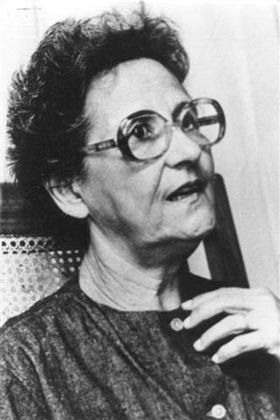
Arrested in June 1965, she was sentenced by the courts to 30 years in prison.
In the interrogations she revealed how close they had been to carrying out the assassination of the maximum Cuban leader during a visit that he made to the cafeteria of the Habana Libre Hotel, a fact unknown until that moment by the leadership of the Revolution.
In 1978, in the course of the revolutionary government’s dialogue with the Cuban community abroad, she was released. She served 14 years in prison.
Pola, 63, granted me this interview before traveling to the United States. In it, she narrates not only the famous plan of the capsules to assassinate the Commander in Chief, but other aspects of her activity such as the campaign for the Parental Power. A woman of high stature and aristocratic appearance, she unfolded with ease and responded extensively during the course of the conversation, which was recorded with her authorization.
Why did you conspire against the Revolution?
I was anti-Batista. I worked with Carlos Prío. I also worked with Raúl Rodríguez Santos. That led to my having to go into exile in the United States in 1958. When I arrived in Miami I went to live in the house of José Braulio Alemán (Neneíto).
When Fulgencio Batista escaped, I was ready to return to Cuba, but Prío asked me to stay because a coup was being prepared for January 4. With that objective in mind, Tony Varona was already in Havana and Aureliano Sánchez Arango was traveling in a boat to the island with weapons. But Castro beat us to it.
My daughter was studying. I waited for her to finish the course before returning to Cuba.
When did she return?
At the end of May. The news that arrived in Miami stated that the Revolution was red. What I was able to verify upon my return.
I have never been a communist. I was always against the communists. I never sympathized with the communists. I found out that they had taken away my friends’ property, my family’s property. That made me feel bad. I got into a rush, a delusion to overthrow the government. My son had to take me to a psychiatrist.
He found me delirious with guilt. He cured me, but I made him counter-revolutionary and he ended up leaving for the United States.
Already a master of my way of being and thinking, I wanted to find someone with whom to start working against the situation, since I could not do anything on my own. I contacted the person who represented Tony Varona in Cuba, since he had returned to Miami. I’m talking about the second semester of 1960.
Who was that person?
Albertico Cruz, an old friend from Machado’s time, a real front-runner who was acting as the Rescue Coordinator.
I also made contact with former Colonel Manuel Alvarez Margolles, who was the military head of that organization, and we started working together.
What influence did Margolles have on you?
A lot. I was extraordinarily subdued by his way of being. Honestly, anything he told me to do, I would have done.
Were you given any responsibility?
I was appointed as the female coordinator, with Albertina O’Farrill as the person responsible for the asylum.
At that time Tony Varona asked me to send a trusted person to Miami.
Who was chosen?
Rodolfo León Curbelo.
What year was that?
February 1961. Two months before the Bay of Pigs invasion.
Did you know about the invasion?
Leon Curbelo already had instructions about it.
Who informed him?
Tony Varona. He was a member of the Democratic Revolutionary Council. He sent me a letter giving me instructions. The failure of the invasion came and I had to take Mario del Cañal and others into custody.
In which embassy did you isolate them?
In the Venezuelan Embassy.
Did you promote the campaign for the Parental Power?
I spread the rumor that the communist government would put into effect on January 1, 1962 a law whereby all children between the ages of three and ten would be placed in Children’s Circles and would only be allowed to see their parents twice a month.
Those over ten years of age would be transferred to other circles in the provinces and no minor would be allowed to leave Cuba without special permission.
According to this law, the State would be the absolute owner of the children and the parents would lose their rights over the children and many would be sent to Russia. We came to write and print a false law of the revolutionary government in this sense.
Why did you do this?
As a way to destabilize the government and for the people to begin to lose faith in the Revolution.
Quite a cynical attitude.
We were at war with the government. In war everything is allowed.
Who were your collaborators?
My brother Mongo, some sectors of the church and various friends.
Who was involved in sending the children to Miami?
My brother Mongo and I.
What name did you give to that operation?
Pedro Pan (Peter Pan). A fairy tale in which Pedro Pan took the children on a flight to achieve a better way of life.
When did the operation begin?
In the first months of 1961. My brother Mongo received a letter from the Catholic Welfare Bureau in Miami in which they proposed a plan to get children out of Cuba by providing passports and special visa waivers, taking them on commercial airplanes to the United States.
Who supported her?
Beatriz (Betty) Pérez López, Hilda Feo, Alicia Thomas, Marie Boisssevant, wife of the Dutch ambassador; Father Raúl Martínez, parish priest of Santa María del Rosario Church; Wanda Foschini, assistant to the Italian ambassador; the German ambassador, Karl Von Spretti. In the airlines we had Ulises de la Vega from KLM and Julio Bravo from the Pan American. The person in charge of stamping the false visas in the passports was Borico Padilla. The most important of all the collaborators was Penny Powers.
Who was Penny?
A British intelligence agent who served as our liaison with the British Embassy. Through her we sent and received communications with Monsignor Walsh through the diplomatic bag of the British. It had the code name “Kilito”.
What was the mechanism like?
In order to leave Cuba, children needed passports with valid visas or special visas. Since there were no diplomatic relations between the United States and Cuba, it was practically impossible to obtain visas.
The State Department contacted my brother Mongo and told him that they had appointed Irish Catholic priest Bryan O. Walsh, director of the Catholic Diocese of Miami, as the coordinator of the program in the United States and he was authorized to sign the visa waivers.
How did the visas enter Cuba?
Through diplomatic contacts.
How did they know their numbers?
We received all the passport and visa numbers from the United States by radio. We would tune the radio on the modulated frequency and listen to a coded song.
What song?
If they played Granada, it meant that there was no message, but if we listened to Jascha Heifetz’s violin solo, it meant that a voice was coming up counting from one to ten, then it gave a long series of number combinations that we decoded the same Mongo as I did from a secret book containing the keys. Ivan Ledo, a person we trusted, sometimes intervened in this operation.
With the visas in his possession, what did they do?
Once we received them, we attached them to the passport. This work was done between noon and three o’clock in the afternoon on the porch of the residence of my uncle -Ramón Grau San Martín- on Fifth Avenue and 14th Street, in Miramar.
Through individuals we trusted, we sent the passports to another person in the distribution chain who in turn passed them on to another intermediary. There were five or six steps for distributing the passports. You could only meet one person at each level.
Did the Americans have any records?
When people arrived in Miami they would ask, “did they charge you or didn’t they? If they said that the visa had cost them some money, they would inform us. We confirmed. The person who had applied for the visa the most would never have the problem solved again. We would close the doors on them.
What other contact did you have in the United States?
For the mail, it was Margarita de la Riva, on Calatrava Street and Coral Gables, a suburb of Miami.
Did they receive financial assistance?
Father Walsh sent us funds through money orders that were wrapped in cellophane to look like a package of playing cards.
How long did it last?
Until 1962. When the Rocket Crisis occurred in October, the US government cancelled all flights from Cuba.
How many children were taken out of the country?
About 14,000.
How old were they?
All of them under 18 years old.
Did the parents leave with the children?
They were sent out alone.
To relatives?
Most had no relatives in the United States.
Under what protection?
They were placed in foster homes and camps throughout the United States, under the sponsorship of the American Catholic community.
How did the CIA recruit you?
Through Norberto Martinez. Not only me, but also my brother Mongo. This happened in the first weeks of 1962.
Who is this gentleman?
A doctor. He had been the director of the Mazorra hospital in my uncle Grau’s government. He had worked in Pinar del Río during the electoral campaigns. He was married to a relative of Juan Antonio Rubio Padilla, who were like my brothers.
Norberto entered Cuba clandestinely from the United States. He was in trouble. His brother Israel, who was in prison and left recently, told me about Norberto’s presence and the need to hide him. And I hid him.
In what place?
In the back of the house, where Mongo had the dairy business. In that place we had silverware and other valuable belongings that my friends left behind when they left Cuba to be kept until the Revolution fell.
Was Norberto’s mission successful?
It failed. They arrested two of his companions and occupied the weapons they had brought into the country. Then we took him out clandestinely.
What activities did the CIA entrust him with?
To send information.
What kind of information?
All kinds. Especially military and economic. For example, if Cuba bought some buses from England, we would tell the Americans and they would prevent the sale of spare parts.
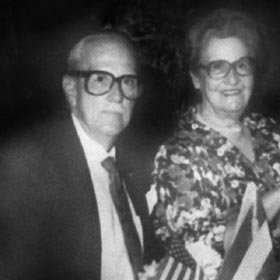 POLA GRAU AND HER BROTHER RAMÓN, BOTH AGENTS OF THE CIA.
POLA GRAU AND HER BROTHER RAMÓN, BOTH AGENTS OF THE CIA.
Did you work alone?
I created a network of women in most provinces that collected information. We also hid hunted people, gave them asylum, collected money and transported them in a van. Some did not know of my existence. Much less that I was the boss. I handled myself with the necessary discretion.
Do you remember any names?
Queta Meoqui, María Dolores Núñez, a lady named Aurelia, over the years I have forgotten her last name. A good friend of mine. She was the wife of a real senator from Camagüey. As well as Mario del Cañal.
The person I trusted the most was Maria Horta. She was able to leave the country. I don’t know why State Security didn’t arrest her. When I fell prey, she was here, but she left in a quiet plane. However, other women who were not so important fell.
I recognize that Security is one of the best organized things the government has, but they had a failure there. They didn’t catch the woman who was precisely the key.
Has it ever occurred to you that State Security has intentionally let Maria Horta go?
I never thought about it.
By what name were you known?
My old friends used to call me Polita. The others, Hilda or Isabel.
Did you think that the Americans would achieve their freedom?
At first, yes. Then I became disappointed in them. We served them so well and none of us were taken away.
Were they ungrateful?
I’m sure they were. Although they said that we worked at our own risk.
Did you intervene in the preparation of Fidel Castro’s assassination?
They were instructions I received from the CIA.
How would the attack be carried out?
By poisoning with some aspirin-type pills that they sent me from Miami.
How did they reach you?
Tony Varona sent them to me with Leon Curbelo.
What were they for?
In an ordinary Bayer aspirin knob.
What color were they?
White.
What did he do with them?
I gave the knob to Herminia Suárez to keep it.
Why to her?
Her house was the one that served as contact with the Rescue people and with the group of Carlos Guerrero, an old friend of mine.
What did she do with the “aspirins”?
Cruz, Margolles and I agreed to distribute them among collaborators we had in the gastronomic network. Not much time had passed when a diplomatic friend asked to see me.
From which embassy?
Spain.
What was his name?
Alejandro Vergara.
What did he want?
He gave me a letter from Tony Varona and some capsules sent to me by the CIA.
What did the letter say?
He explained that these capsules were more effective for Castro’s assassination and how to use them.
What did they contain?
A deadly poison prepared in the CIA laboratories. They were flavorless liquid capsules. They had an effect on the body between 12 and 24 hours after being swallowed, and they left no trace.
How did you distribute them?
I gave several to Manuel de Jesús Campanioni, who had been a dealer at the San Souci cabaret, and he distributed them to gastronomic workers he trusted.
We were fascinated by the capsules. When we saw that time was passing and nothing was happening, someone – I think it was Matamoros – thought that we could also try to poison some leader, a “peje gordo”, so that Castro would go to the funeral and make an attempt on him. We had people and weapons to carry out the action. We requested authorization from the CIA to apply this variant. They answered in the affirmative.
With this intention, I took a capsule to a young man who worked in the El Recodo cafeteria. But I did not find it. The boy had left the country.
In the midst of all this, Margolles was arrested. They put him on trial and shot him. He was the soul of Rescate. Cruz was the coordinator but the man of action, the military man, was Margolles, and when he died, everything fell apart.
What did he do with the capsules?
I also gave them to Herminia Suárez to hide them in her residence. Until Dr. Carlos Guerrero asked me for them.
What was the final destination of the capsules?
In those years I was working in the cafeteria of the Habana Libre Hotel, one of the places Castro used to visit, a clerk called Santos de la Caridad Pérez Núñez, who received from Campanioni two capsules with the precise instructions to use them against the Prime Minister.
Where did Pérez Núñez take them?
He kept them in his employee locker at the hotel. Later he placed one in the ice cream fridge in the cafeteria.
Where in the fridge?
Inside the middle door, between some tubes that serve as a conduit for Freon gas.
What happened?
One night in March 1963, Castro arrived at the cafeteria. As was his custom, he asked for a chocolate shake. Santos de la Caridad was working. He went to the freezer to get the capsule and pour it into Castro’s shake.
When he went to remove the capsule, the one that had stuck to the cold, burst. When they told me that for me it was a real miracle. I don’t know if I should talk about this. I’ve never discussed it with anyone.
What haven’t you told anyone?
Well, we had studied all the variations for years. The CIA had even analyzed any unforeseen event. But no one, absolutely no one, thought that the capsule would harden in the cold and that it would burst when you took it.
What I am about to tell you does not diminish the professionalism with which Cuban security worked against us. It is not because I have been defeated that I am now going to deny my enemies.
In prison I learned of other cases, of other attempts at assassination attempts that also failed, sometimes even because of changes in timetables, because of insignificance, because of inspirations from Castro himself that no one has ever been able to explain. Apparently, providence is on his side.
The Wasp Network Stings in Miami

The Wasp Network Stings in Miami
 By Rosa Miriam Elizalde
By Rosa Miriam Elizalde
Cuban journalist. First Vice President of UPEC and Vice President of FELAP. She has a PhD in Communication Sciences and is the author or co-author of the books “Antes de que se me Olvidar”, “Jineteros en La Habana”, “Clic Internet” and “Chávez Nuestro”, among others. She has received the “Juan Gualberto Gómez” National Journalism Award on several occasions. Founder of Cubadebate and its Editor-in-Chief until January 2017. She is a columnist for La Jornada in Mexico.
On twitter: @elizalderosa
July 9, 2020
Translated and edited by Walter Lippmann for CubaNews.
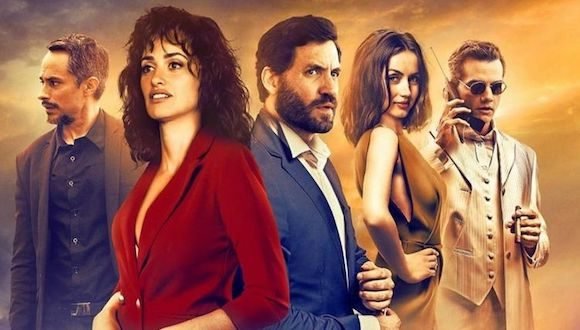 Since Netflix decided to release The Wasp Network on June 19 and reached the captive audience through Covid, the film has become a media success for unconventional reasons.
Since Netflix decided to release The Wasp Network on June 19 and reached the captive audience through Covid, the film has become a media success for unconventional reasons.
In Florida, they have threatened to burn down movie theaters if the film is ever shown, and signatures are being collected to force Netflix to withdraw the film, not understanding that the download site is not a television channel. People have the option of watching it or going on, although the scandal must have boosted the rating of a film that had passed through the Venice Film Festival without any sorrow or glory, despite a celebrity cast headed by Penélope Cruz.
But in Miami right now the theme of the film has become a sort of anti-communist conga with the local media dancing the cool step of attacking the French director, Olivier Assayas. They’re accusing him of making pro-Cuba propaganda. The great detail is that The Wasp Network narrates real events that have been documented by the United States authorities themselves, in a trial that is considered the longest in the history of that country’s jurisprudence and in which three generals, an admiral, a former presidential advisor and self-confessed terrorists, who appear on screen as what they are, testified.
The plot of The Wasp Network began in Havana in the early 1990s. René González (Edgar Ramírez in the film), a flight instructor at a military airbase, steals a plane and flees Cuba. He begins a new life in Miami, away from Olguita, his wife (played by Penelope Cruz) and their young daughter. Other Cuban “deserters” soon follow him and set up a network to infiltrate organizations based in that city, responsible for attacks on the island, including a hotel bombing campaign that killed an Italian tourist. Instead of capturing and prosecuting the terrorists, responsible for atrocious crimes, the U.S. government locks up and subjects Cuban agents to blackmail and punishment.
It’s the story of what happened in its pure state, naked in the opinions or interpretations of the screenwriter and director; an intolerable truth for one of the real characters in the film, José Basulto. He presented himself in those years as a good Samaritan, savior of rafters in the Florida Straits, but he supported his excursions with drug trafficking, cheerfully violated Cuban airspace and financed shootings against bathers on the beaches.
Paradoxically, the evidence of his crimes was not provided by the Cuban Ministry of the Interior, but by the FBI, which was aware of everything that was going on, as the film shows. Now Basulto shouted against Netflix and shook his fist in front of the cameras: “I more than agree with Trump that the relationship and agreements with Cuba should be terminated.
There’s a story that seems merely anecdotal of events that occurred over 20 years ago, but it’s current if you look at it correctly. Genuine people like José Basulto or Luis Posada Carriles, who organized the bombing of hotels in Havana and the sabotage of a civil airplane in which 73 passengers and crew members died, are not marginal in American society today.
The Cuban from the island who saw The Wasp Network at the Havana Film Festival last December knows that the hatred that inspired the Mayan attacks in the 1990s permeates today the speeches of President Donald Trump and conquers other radicals who swarm the Facebook forums and YouTube channels linked to white supremacists. Moreover, George W. Bush unleashed his war on terrorism from others while protecting his terrorist friends at home, and now Trump courts Florida’s arsonists and is evasive in condemning the right-wing extremists who have left a trail of death during his administration from Charlottesville to Minneapolis to El Paso.
A study by the U.S. Extremist Crime Database indicates that 74% of the terrorist attacks that occurred on U.S. soil after September 11, 2001, through 2016, were the work of the extreme right. Since Trump became president in 2017, most attacks against defenseless civilians have been carried out by supremacists. The profile of the aggressor does not vary much: a white man, inspired by other violent acts and speeches, and with easy access to assault weapons. He is the archetype of José Basulto, who benefited as the current right-wing extremists from the American law, which only allows the designation of foreign groups or attackers as terrorists.
Virtues and shortcomings of performance apart, The Wasp Network is unusual and courageous. It focuses on explaining what was hidden for decades and still does not want to be looked at head-on: why Cuban agents were sent to the United States. This is the heart of the story that has set the networks on fire, that tries to censor on Netflix and that has the right-wing making common cause against the Spanish vice president, Pablo Iglesias. He accompanied the film’s Twitter feed with three words of unsurpassed precision: “Seen it. Heroes. Great Movie.”
Terrorism is the Opposite of Revolution
Terrorism is the Opposite of Revolution
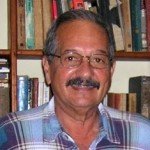
By Manuel E. Yepe
http://manuelyepe.wordpress.com/
Exclusive for the daily POR ESTO! of Merida, Mexico.
Translated and edited by Walter Lippmann.
I have written a great deal about the desirability and necessity of the international community’s categorical definition of the term terrorism. Since there is no universally-accepted definition
of the term for use by international humanitarian law, and no such formulation has been reached in international bodies, apparently, because of the impossibility of doing so without including the terrorist actions of nation-states.
In 1937, the League of Nations referred to terrorism as: “Any criminal act directed against a State, intended or calculated to create a state of terror in the minds of private persons, a group of persons or the general public. In 1988, the United Nations General Assembly adopted a resolution reiterating that “…criminal acts directed or calculated to provoke a state of terror in a group of persons or in particular persons in the general public, for political purposes, are unjustifiable in all circumstances, whatever the political, philosophical, ideological, racial, ethnic, religious or any other considerations that may be invoked to justify them”.
Dictionaries more or less agree in identifying terrorism as “the systematic use of violence, or threat of violence, against individuals or larger groups, to achieve a political objective whose scope often transcends boundaries national.”
Although it is common to specify that it refers to actions carried out by non-governmental groups, there is also admitted, as another concept, that of “state terrorism”. This is is that exercised by a government against communities under siege or that it seeks to conquer, or against its own subjects as a means of subjecting them to its excesses and arbitrariness.
It has become a tradition, and it is still a systematic practice today, that the great powers and tyrannical governments, use their vast media resources to make the term “terrorists” be applied to the methods of struggle chosen by revolutionaries and patriots in their emancipatory clashes.
The U.S. superpower has imposed the label “terrorist” on the fighters who have made their actions felt. Its immense media power describes as terrorism the actions of the patriotic resistance, whose clear military inferiority is imposed to organize in secret or irregular units that fight outside the universally accepted military parameters when facing the superior armed forces of the invader or occupier.
Hence the need to avoid this trap by clearly distinguishing revolutionary methods of struggle from terrorist methods. On the basis of my own personal experience, as a combatant in the ranks of the insurrectional movement that defeated the dictatorship that ruled Cuba until the last day of 1958 and took power on a day like today in 1959, I perceive several clear differences:
Revolutionary methods are identified with the aspirations of the people while the terrorists are almost always strongly rejected by the population. This is because the former seek to innovate the scenario and the asymmetrical conditions of the struggle in order to raise the combative morale of the people. They also promote the incorporation of new armies, to ridicule the unpopular repressive forces of the tyrannical regime.
Their goal is to call the world’s attention to the revolutionary war being waged and to denounce the anti-popular character of the oppressive government. Revolutionary forms of underground struggle are intended to increase the support of the people for their cause and therefore are not intended to provoke panic but to promote the adherence of the people. Terrorist procedures are typical of the gangs of drug criminals, mafias, extreme right-wing paramilitary organizations and, in general, mercenaries at the service of powerful economic interests.
They seek to impose their authority on the basis of the population’s fear of the cruelty of their actions. These may take the form of threats, warnings or they may be directly punitive. They do not aspire to attract the people to their cause but to impose their authority on the basis of fear, on fear.
Terrorism generates panic and causes suffering and death to innocent people. Revolutionary methods engender admiration for the selflessness of those who carry out the actions and call for struggle and sacrifice for a just cause that identifies with the aspirations of broad sections of the people,
During the insurrectionary uprising in Cuba against the dictatorship of Fulgencio Batista supported by Washington, along with the guerrilla warfare that was being waged in the mountains, another very risky underground struggle was being fought in Cuba in the urban areas of the country that contributed decisively to the popular triumph of 1959.
The main actors in the urban revolutionary struggle were combatants from the same revolutionary organizations as when the war ended in the fullness of a process of unification of their ranks. These were the July 26th Movement led by Fidel Castro; the clandestine members of the Revolutionary Directorate created by the University Student Federation and led by its president, the architecture student José Antonio Echevarría, and the forces of the Socialist Youth, the formation of the People’s Socialist Party (Marxist-Leninist), many of whose members supported the line of armed struggle before this was the main form of combat drawn up by the national leadership of the PSP.
These three major political formations arose separately, but were united as the identity of their revolutionary objectives became more and more evident and as the awareness of the advantages that such unity brought to the struggle grew. They acted in a growing number of cities, carrying out political propaganda to promote the patriotic armed struggle. They carried out armed propaganda that included detonations with explosives, sabotage of production and services. They interrupted communications and transportatipm to harm the economic activity of the big businessmen who were unaware of the patriotic effort against the dictatorial regime. They collected resources through voluntary contributions of economic funds to supply the guerrilla fronts and urban combat activity, This was done taking care that the contributions were not contaminated with ill-gotten money. They collected taxes from entities located in areas that were being liberated and directly confronted the armed forces of the police and the army, among many other functions.
It was certainly an extremely dangerous activity for revolutionaries, and not only because of the brutal retaliation by the police forces against the tyranny that included barbaric torture of those we captured. In addition, this was also because of the risks involved in handling explosives.
The underground fighters had to mourn the deaths of some of their bravest and most determined comrades in arms or explosives handling accidents. But there were never, to my knowledge, cases of civilians (non-combatants) being killed or injured because of their own irresponsibility, thanks to their belief that it was a matter of principle to avoid actions too risky for non-combatants.
That is why it is advisable to be wary of information linking popular resistance movements anywhere in the world to terrorism. In each situation, it’s necessary to examine each case in the light of the motivations and objectives of its combatants, as well as the circumstances in which the struggle is waged.
Washington unabashedly approves of “friendly dictatorships” while applauding, promoting and financing terrorist actions by its allies and its own intelligence and counter-intelligence organizations. At the same time Washington presents itself as the leader of a war against terrorism that is increasingly rejected or distrusted by the people.
Terrorism could never be a method of revolutionary struggle because it is contrary to the interests and aspirations of the people and so could never be identified with a popular cause. That is why it is increasingly easy and possible to identify the difference between terrorism and the irregular methods of revolutionary struggle that oppressive regimes cynically try to equate. True revolutions must be characterized by the admiration of their own people for their humanism. That is why they are respected even by those they fight.
It should be a source of pride for Cubans and admiration for other peoples that, despite the fact that Cuba had suffered thousands of deaths as a result of acts of terrorism organized and financed from United States territory, the island’s authorities had never resorted to such despicable methods of defense or counterattack, even in the most extreme situations.
The fact is that terrorism, as a method of struggle, is typical of fanatics or criminals who seek their own good to the detriment of the common good, or of those ambitious for power and wealth who despise others. The torture of prisoners could never be the method of revolutionaries, who only deserve such a label if they are fighters for human welfare and dignity.
January 5, 2020
Originally published in two parts.
FIRST
https://manuelyepe.wordpress.com/2020/01/10/terrorismo-es-lo-contrario-de-revolucion-i-por-manuel-e-yepe/
At Least 11 Killed in Pittsburgh Synagogue Shooting

At Least 11 Killed in Pittsburgh Synagogue Shooting
Trump calls for strengthening the death penalty and says if the temple had had armed protection, the tragedy would not have occurred.
Posted: Saturday 27 October 2018 | 07:05:43 pm

By Juventud Rebelde digital@juventudrebelde.cu
A CubaNews translation.
Edited by Walter Lippmann.

The attack is considered a hate crime and constitutes a federal violation. Author: Taken from the Internet Published: 27/10/2018 | 06:58 pm
Trump calls for strengthening the death penalty and says that if the temple had had armed protection, the tragedy would not have occurred.
The gunman also shot at the police officers who came to face him and four of them were also wounded, local KDKA reported. It described the suspect of this hate crime as a white man with a beard, 48 years old, who was wounded in his confrontation with the SWAT team.
The attack occurred during Shabbat services at the synagogue that was filled for that weekend ceremony, and the perpetrator apparently lives in a nearby apartment. Police are also investigating whether Bowers announced his intentions in social media on Saturday morning. His account appears to have been withdrawn.
One of the messages on that account said, “HIAS [the Hebrew Immigrant Help Society] likes to attract invaders to kill people. I can’t sit back and watch my people get killed. Screw on your optics, I’m going in.
The Gab.com website, which describes itself as “The Home of Online Freedom of Expression,” rejected claims that it was responsible for the shooting after it confirmed that the name identified in media reports as the suspect matched the name of an account on its platform.
The site’s statement states that “Gab.com’s policy on terrorism and violence has always been very clear: we have no tolerance for it. Gab unequivocally disapproves and condemns all acts of terrorism and violence. This has always been our policy. We are saddened We are saddened and disgusted by the news of violence in Pittsburgh and we keep the families and friends of all victims in our thoughts and prayers.
The FBI is spearheading the investigation into what happened because it is considered a hate crime and a federal violation.
According to KDKA Pittsburgh, President Donald Trump, who advocates the possession of weapons in civilian hands and refuses to endorse any legislation that limits it, said that if the synagogue had had armed protection, things would have been different.
The president added, “It’s a terrible thing that’s happening with hatred in our country and, frankly, all over the world, and something must be done.
Speaking to reporters at Andrews Air Force Base on the way to Indianapolis, Trump added, “I think one thing we should do is strengthen our laws on the death penalty. When people do this, they should get the death penalty and not have to wait years and years.
HispanTv cites statistics provided by the Gun Violence Archive (GVA) on gun violence in the United States so far in 2018, with 11,980 people killed and 23,332 injured in shootings.
Terror in the United States

Terror in the United States:
72 Hours Filled with Hate

By José R. Oro, A Cuban engineer who lives in the United States.
October 31, 2018
Translated and edited by Walter Lippmann for CubaNews.
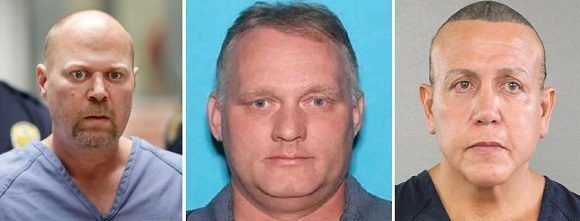
The three terrorists, from left to right: G. Bush, R. Bowers and C. Sayoc. Photos from RT.
On Wednesday, October 24, a white man with a history of violence shot and killed two African Americans, apparently at random, in a store in Kroger, Kentucky, after a failed attempt to break into a church.
After “mail bombs” were sent to people who are President Donald Trump’s main political critics and enemies, authorities arrested a suspect, a man who had vilified and stigmatized Democratic supporters and minorities with hateful messages on social networks.
And on Saturday morning, 27, a man shouting anti-Semitic insults in the best style of Nazi Germany’s brown shirts opened fire on a Pittsburgh synagogue, killing 11 people attending religious services.
Those three criminal incidents that occurred in just 72 hours had only one thing in common: hatred.
Death in the grocery store
Gregory Bush, a 51-year-old white man, first attempted to enter a church in Jeffersontown, Kentucky, just outside Louisville. It was the first predominantly black Baptist church, and Bush supposedly knocked on the door and tried to open it, but failed to get in. The doors were closed.
He then went to a Kroger chain store, where he shot two people, both African Americans. The first victim was Maurice Stallard, 69, who was with his 12-year-old grandson. The second was Vickie Jones (67) who was killed in the parking lot while the attacker fled.
Gregory Bush has a long history of mental disorders, of making racist threats, and repeatedly called his ex-wife the N-word (nigger), as part of a long criminal history that includes domestic violence, and other disturbances of order.
Terror by Mail
As the shooting in Kentucky took place, the number of suspicious packages in the mail grew.
The first was discovered Monday afternoon at the home of Democratic (and multimillionaire) donor George Soros. On Wednesday morning, two more, one addressed to former Secretary of State Hillary Clinton, and another to former President Barack Obama. Four more were to be found before the end of the day, including a bomb-package sent to CNN’s New York offices, which led to the evacuation of the entire Time Warner Center complex. Another package was addressed to former CIA director John Brennan.
On Friday, news of more packages arrived and then the arrest of a 56-year-old man named Cesar Sayoc, a Florida resident. Federal authorities said they sent a total of 14 bomb-packages (the kind we know in Cuba as “nipples”), none fortunately detonated, but they were all very real.
Sayoc’s political inclinations were passionately exhibited. On his van, he had a tag that said “CNN sucks. Through two Facebook accounts and three Twitter accounts, Sayoc often posted provocative photos and comments attacking liberals, along with crude conspiracy theories against the United States.
Massacre in the Synagogue

Trio sings a song of mourning in Hebrew. Pastor Steven Cousins of Bethel African Methodist Episcopal Church, and Rabbi Giora Lilienthal, both from Connecticut, use the word. Photo: José R. Oro.
On Saturday morning there was a massive shooting at a Pittsburgh synagogue, where hundreds of worshippers had gathered at 9:45 am. Suddenly, a man came in screaming anti-Semitic insults with two guns and an AR-15 rifle and opened fire. He killed 11 people. Six more were injured.
Robert Bowers, 46, was identified as the gunman and arrested. He had frequently expressed his disdain for Jews in social media and also published xenophobic comments alleging that Jews were helping to transport members of migratory caravans in Latin America.
Rejected by the People of the United States
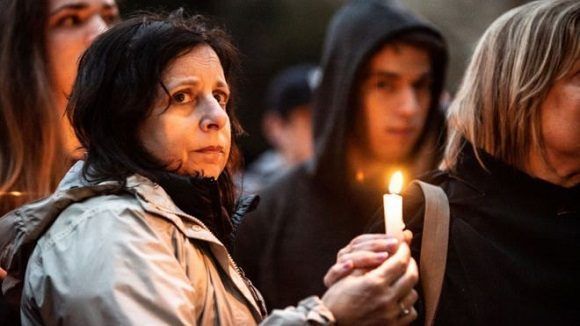
Hundreds of people, both in the Squirrel Hill neighborhood and throughout Pittsburgh, gathered hours after the attack for an interfaith vigil on behalf of the victims. Photo: Getty Images.
Hundreds gathered for a Saturday night vigil in Squirrel Hill to mourn the victims of the synagogue and show support for the Jewish community.
An interfaith service also took place at the sixth Presbyterian Church in Squirrel Hill on Saturday night.
At 5 p.m. a vigil at the Jewish Community Center (what we know in Havana as the Hebrew Community) in Woodbridge, Connecticut, brought together more than two thousand people from New Haven County.
The attendees were Christians, Jews, Muslims (2 families, one Turkish and one Bangladeshi), whites, blacks, Hispanics, Asians, children, adults and the elderly. All the best of the American people were present.
I asked several people what they thought about the cause of this unprecedented terror. All the presenters agreed that President Donald Trump’s policy of hate and threats (both nationally and internationally), the irresponsibility of his comments in the media, and his unrestricted support for the NRA (National Rifle Association) contributed to and motivated these crimes.
Was one of the three terrorists an Islamic fundamentalist? Or a radical leftist fanatic? A Russian, Chinese or Venezuelan agent? None of the above, all supporters of Donald Trump, all with a history of violence, which one imagines would give him no chance to buy arms or ammunition. Everyone in the vigil comments with anger.
Donald Trump, with his irresponsible tweets and media shows insulting minorities and anti-immigrant attitudes, has been the catalyst that the sewage of American society has overflowed and is flooding the country.
With great prudence, I asked some attendees what they knew about the “embargo against Cuba” and about the upcoming U.N. vote. Two people told me that they knew absolutely nothing about the blockade and assured me that they would be informed about it. Two others told me that they knew about the blockade and that they were vertically against it. And one of them, Eliot Meyers, looked at me in astonishment and asked me, “But didn’t Obama remove the embargo against Cuba? I explained to him that the “embargo” is in force and being applied with a maximum of inclement and cruelty by President Trump. Elliot lowered his head and said to me: “These are the same criminals, those who kill in the synagogues or send bombs and those who want to destroy the Cuban people. Elliot is an appliance dealer from Orange, Connecticut.
What’s next?
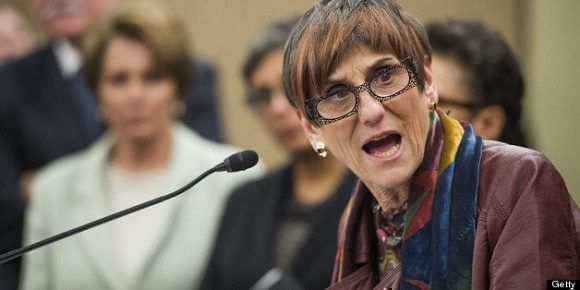
Democrat Congresswoman Rosa de Lauro, a great friend of Cuba, rejected violence. Photo: Bill Clark/ CQ Roll Call.
The pain and bitterness continue throughout the U.S., on a Sunday when people would normally talk about American football games (the Pittsburgh Steelers play at home) and the crucial fifth game of the World Series between Boston Red Sox and the Los Angeles Dodgers. But on this occasion, thousands and thousands are on the street protesting the terror of the fascists and supremacists, and more importantly, their causes, which now have a consensus in the understanding of the people.
The victims will remember the tragedies of those 72 hours filled with hatred, for a long, long time. As early as November 6, in the midterm elections, these savage crimes will motivate hundreds of thousands to go to the polls that day and vote against those who are trying to lead the U.S. to unbridled, uncontrolled fascism and humanity to its certain destruction. Of the many phrases and posters I saw and heard, there were some that impressed me in a special way. One sign read: “We cannot cure a fool, but we can vote against him.
Subscribe to Blog via Email
| M | T | W | T | F | S | S |
|---|---|---|---|---|---|---|
| 1 | 2 | |||||
| 3 | 4 | 5 | 6 | 7 | 8 | 9 |
| 10 | 11 | 12 | 13 | 14 | 15 | 16 |
| 17 | 18 | 19 | 20 | 21 | 22 | 23 |
| 24 | 25 | 26 | 27 | 28 | 29 | 30 |
| 31 | ||||||


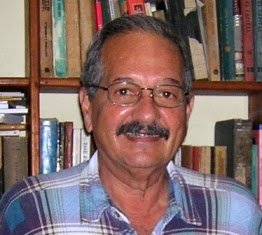
You must be logged in to post a comment.